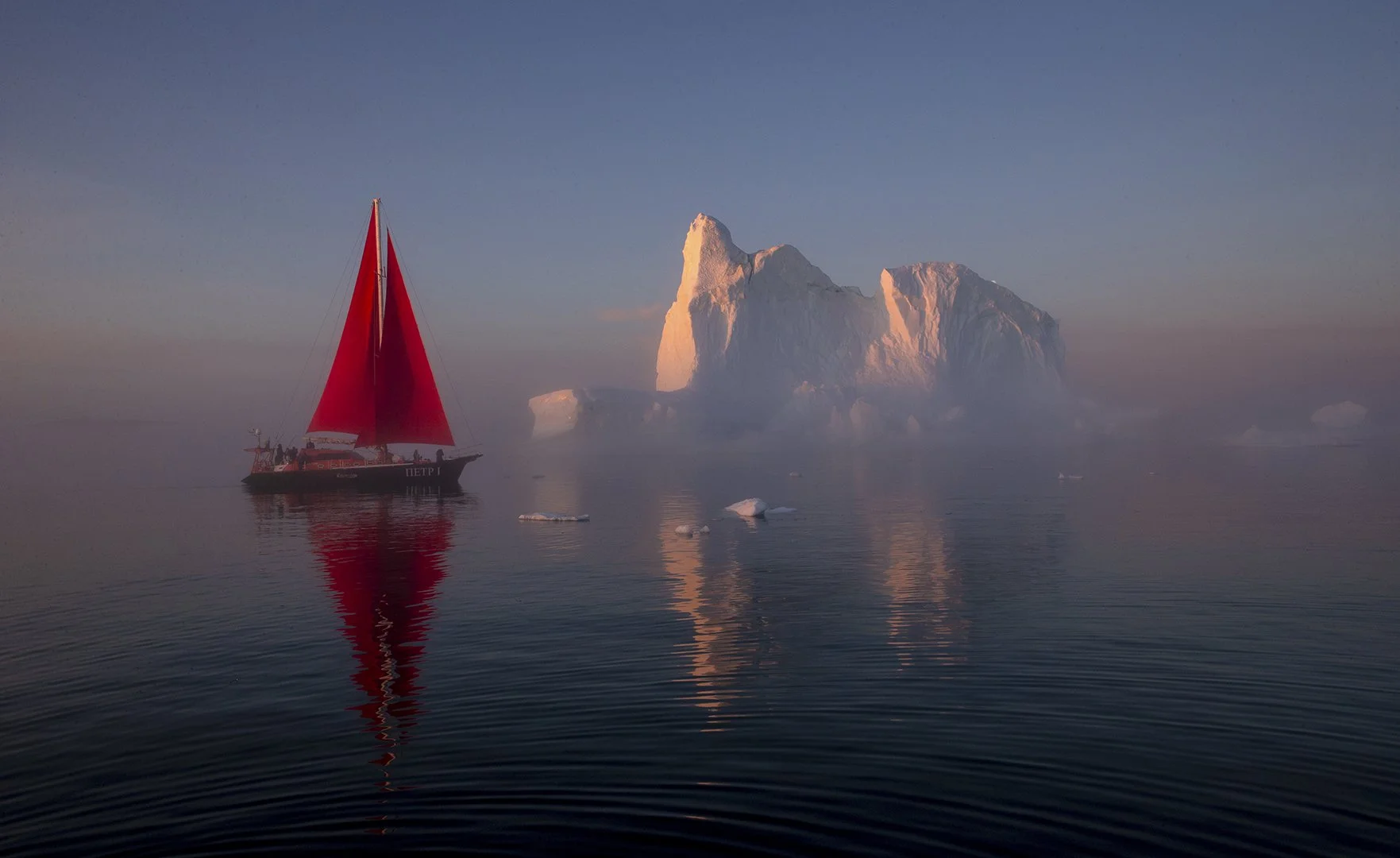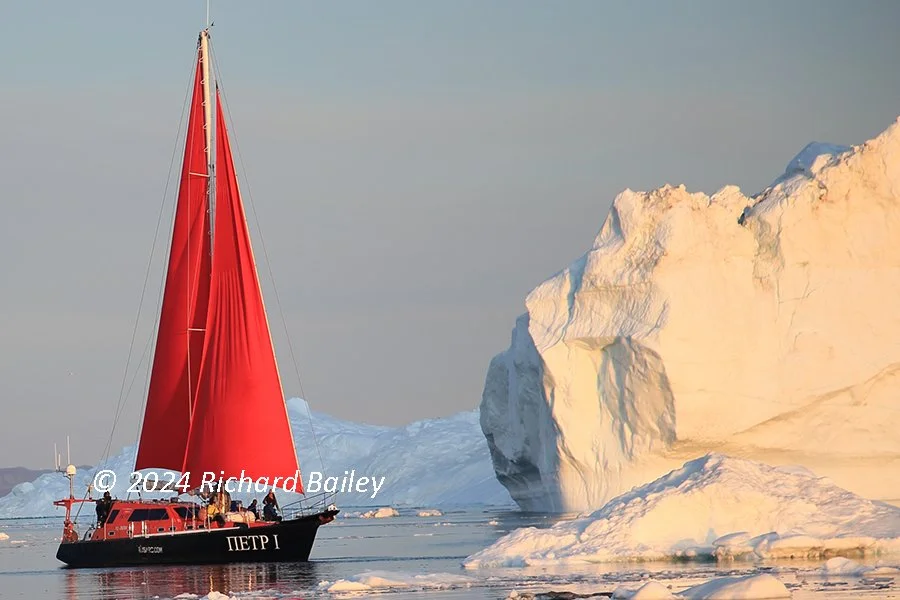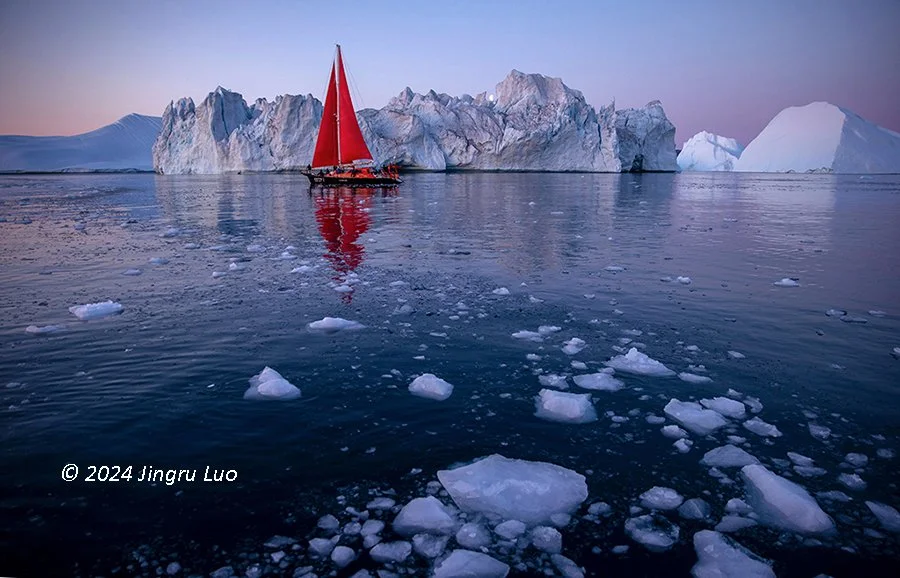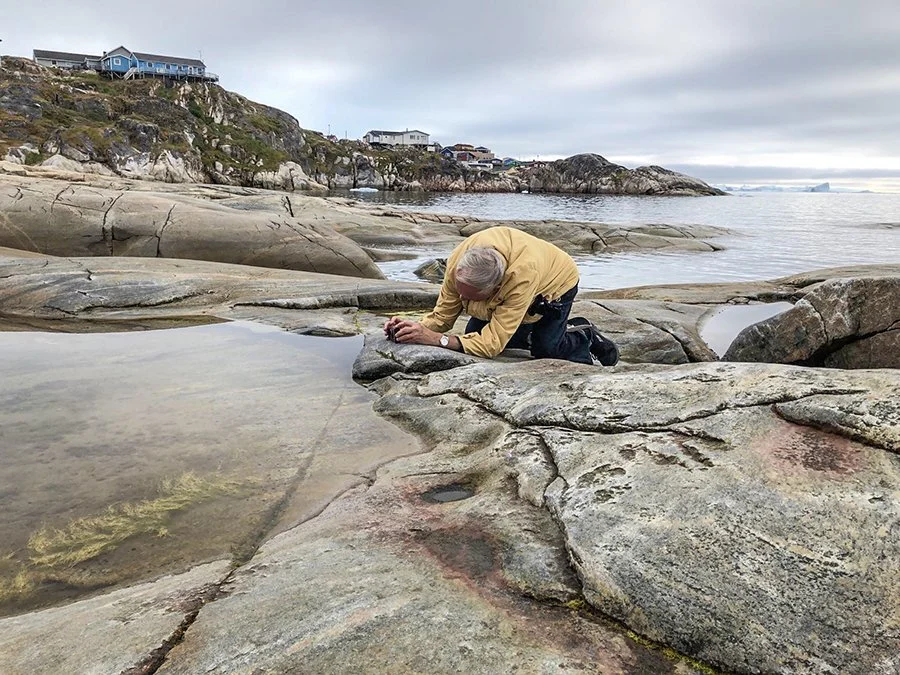Greenland’s History
Greenland, the world’s largest island, is a place of stark contrasts, where vast ice sheets meet rugged coastlines and human history stretches back thousands of years. Known for its dramatic landscapes, rich culture, and resilient people, Greenland offers a fascinating glimpse into the past and present of Arctic life.
The Early Inhabitants
The first known people to inhabit Greenland were the Paleo-Inuit cultures, including the Saqqaq and Independence I cultures, around 2500 BCE. These early Arctic peoples were adept at surviving in Greenland's harsh conditions, relying on hunting, fishing, and tools made from stone and bone. Their descendants apparently died out and were succeeded by several other groups migrating from continental North America.
Around 1200 BCE, the Dorset culture emerged, followed by the Thule people around 1000 CE. The Thule culture, ancestors of modern Inuit, were skilled hunters and navigators, using kayaks and umiaks to travel and hunt sea mammals such as seals and whales. Their innovations, including the use of dogsleds and sophisticated hunting techniques, allowed them to thrive in Greenland’s challenging environment.
“XYHF” Jingru Luo PSA GOLD MEDALS: 2019 Lens Queen Circuit, 2020 Tibet, 2020 Super Spectra Circuit, 2020 Gold Huabiao, 2020 Loftman, 2022 Danube Circuit
Norse Settlements
Greenland's history took a significant turn in the late 10th century when Norse settlers, led by Erik the Red, arrived. After being exiled from Iceland, Erik the Red established two main settlements on Greenland’s southwestern coast: the Eastern Settlement near present-day Qaqortoq and the Western Settlement near Nuuk. The Norse settlers primarily raised livestock and hunted seals but struggled with the island’s harsh winters and limited agricultural potential.
The Norse settlements endured for about 500 years before disappearing in the 15th century. Scholars debate the reasons for their decline, citing factors such as climate change during the Little Ice Age, conflicts with the Inuit, and economic challenges.
Colonial Era and Danish Rule
In 1721, Denmark-Norway re-established contact with Greenland through missionary expeditions led by Hans Egede. Over time, Greenland became a Danish colony, and efforts were made to convert the Inuit population to Christianity. Danish influence grew, leading to significant cultural and economic changes, including the introduction of trade and a gradual shift away from traditional Inuit practices.
During World War II, when Nazi Germany invaded Denmark, Greenlanders became socially and economically less connected to Denmark and more connected to the United States. https://en.wikipedia.org/wiki/History_of_Greenland
According to Wikipedia “History of Greenland” (https://archive.org/details/1944-12-27_Yanks_Clear_Greenland_of_Nazis) "Nazi weather and radio stations in Greenland were located and destroyed by the U. S. Coast Guard who dynamited their way through the Arctic ice fields to reach the enemy. Sleek German trawlers were destroyed or captured, and the Nazis were driven from their North Atlantic observation posts."
After the war, Denmark resumed control of Greenland. Greenland remained a colony until 1953, when it was officially integrated into the Kingdom of Denmark as an equal member. This shift granted Greenlanders Danish citizenship and marked the beginning of modernization efforts, including infrastructure development and education reforms.
Towards Autonomy
Greenland has taken significant steps toward self-determination in recent decades. In 1979, Denmark granted Greenland home rule, allowing for greater local governance. This autonomy was expanded in 2009 with the Self-Government Act, which transferred additional powers to Greenland’s government, including control over natural resources.
Today, Greenland is a self-governing territory within the Kingdom of Denmark. Its economy is heavily reliant on fishing and tourism, with increasing interest in the island’s vast mineral resources. Climate change has brought both challenges and opportunities, as melting ice opens new shipping routes and access to untapped resources while threatening traditional ways of life.
Greenlandic Culture and Identity
Greenland’s population, primarily Inuit, has preserved a strong cultural identity rooted in traditions such as storytelling, music, and art. Drumming, throat singing, and intricate carvings from bone and ivory remain integral to Greenlandic culture. The Greenlandic language, Kalaallisut, is widely spoken alongside Danish, reflecting the island’s unique blend of indigenous and colonial influences.
A Land of Global Importance
Greenland’s strategic location and vast natural resources have made it a focal point for global interest. The melting ice sheet, a critical indicator of climate change, underscores Greenland’s importance in understanding and addressing global environmental challenges.
Despite its small population and remote location, Greenland continues to shape conversations about sustainability, resource management, and the resilience of human cultures in extreme environments. Its history is a testament to human ingenuity and adaptability, offering lessons for a rapidly changing world.







